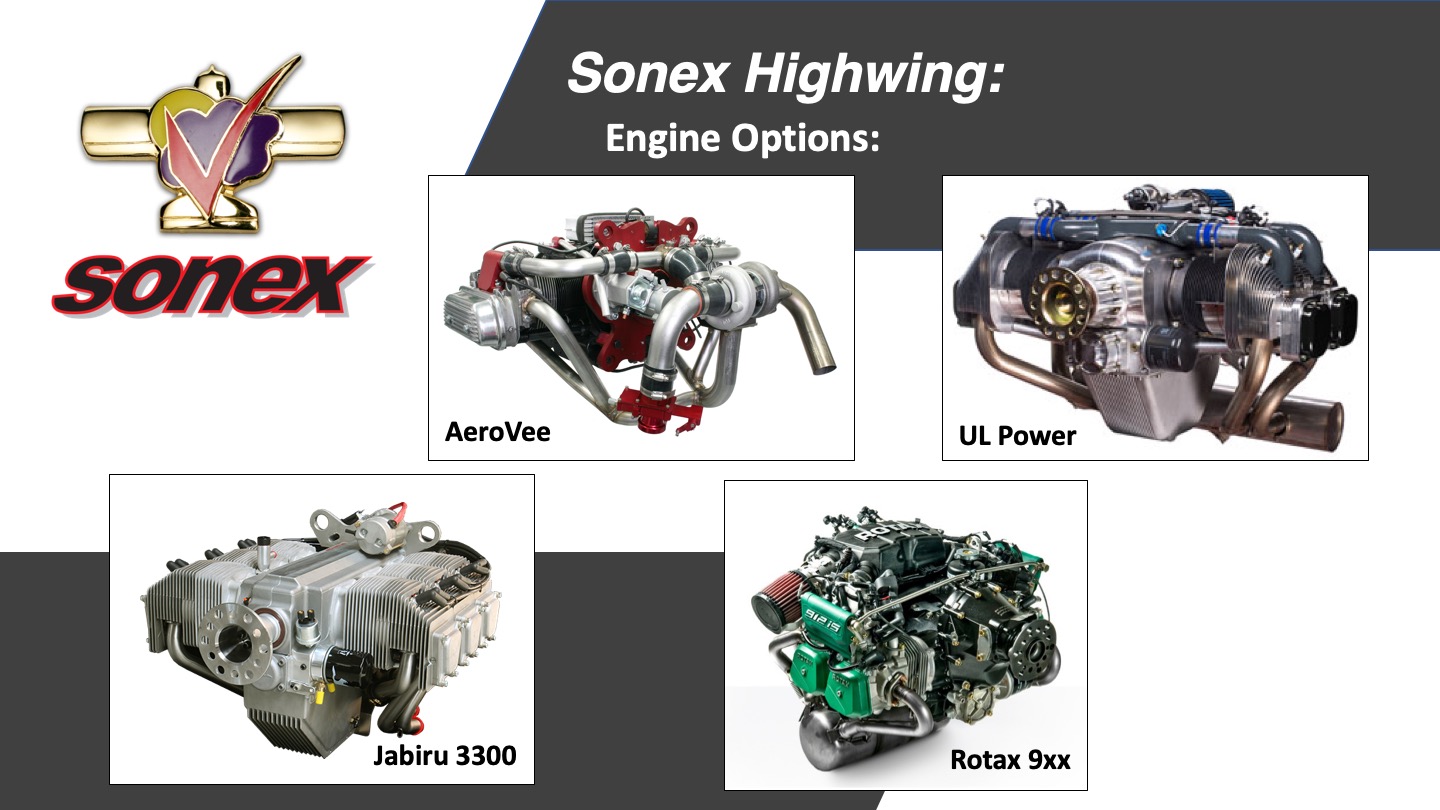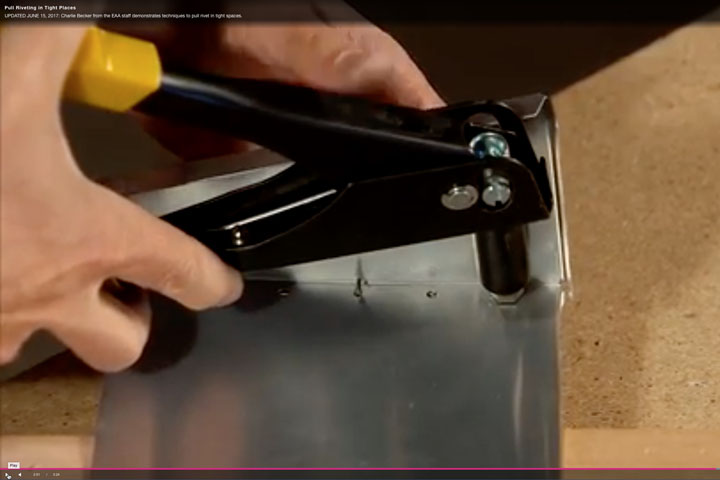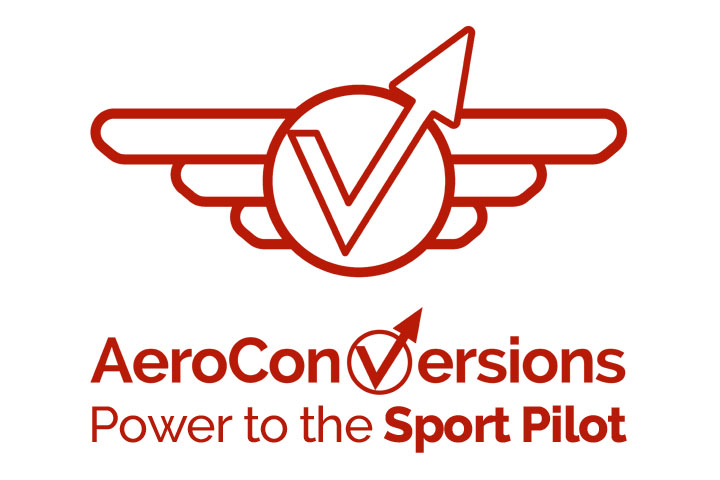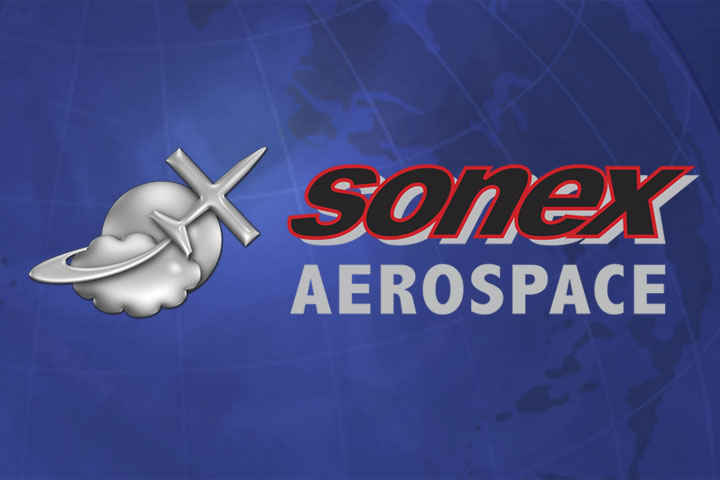The update you’ve been waiting for is here! Watch the archive video of our February 7th Webinar presentation for the entire presentation from Sonex owner and Highwing designer Mark Schaible.
What’s New in This Update?
This is the first update on the Sonex Highwing project since the design was originally announced in the Late Summer of 2021, so there’s a lot of new information available:
- New CAD Renderings: Sink you teeth into the new views of the aircraft below — we think it’s going to be a “looker!”
- More Dimensional Details including a 42″ Interior Cockpit Width at the occupants’ shoulders.
- Easy Ingress/Egress and Step-In Height
- Dimensions from the ground to the bottom of the wing
- Disassembled dimensions for shipping and trailer transport
- Removeable Wings: Preliminary information about installation of the Sonex Highwing’s removeable wings.
- Fuel System Information and Range Estimates: the aircraft will carry 30 Gallons of Fuel.
- Stick Configuration: The aircraft will be easily Convertible Between Dual Stick and Center Stick configurations.
- Baggage Space and Access.
- Aerobatic Capability: The Sonex Highwing will be Capable of Aerobatics with 2 Persons On-Board.
- It’s official, the aircraft has a name: Simply Sonex Highwing or “SH” for short — we’re guessing you get where we’re going with that…
- BRS Installation will be an option for Sonex Highwing customers.
- Purchase Options: The Sonex Highwing will be offered as kits as-well as S-LSA Production Aircraft.
- Engine Options.
- Payload Scenarios.
- Floats? Skis? No Problem!
- No Waiex variant will be offered.
- Q&A: We answer your questions from the webinar!
New CAD Renderings:
We put a lot of thought and effort into the lines of the aircraft for utility, clean aerodynamic lines and good looks. That last one is subjective and beauty is in the eye of the beholder, but we feel that we’ve got a very good looking aircraft here — we hope you agree!
Dimensional Details:
The Sonex Highwing has a 42″ Interior Width at the pilots’ shoulders. Note that this dimension was quoted correctly in Tuesday’s webinar audio, but the accompanying slides erroneosly read 44″ interior width. 44″ is the exterior width at the break between the forward and aft fuselage.
Easy Cockpit Access:
The aircraft is designed to have a large door with exposed foot well for easier ingress and egress. The Highwing also has a very reasonable step-in height for getting in and out of hte aircraft.
What about getting under that wing? The Sonex Highwing has a very reasonable wing height compared with similarly proportioned high wing sport aircraft. See the dimensioned images below:
Seating and Size Comparisons vs. Sonex-B:
As shown in our original Sonex Highwing announcement, the slide below shows a comparison of pilot seating position vs. the Sonex. The Highwing will have pilots sitting about 2 inches farther aft vs. the Sonex, seating geometry allows more knee room, and the seat bottom is 2 inches lower than the Sonex. Small pilots will get to use really cushy upholstery for great comfort! The open space in the cabin between the Highwing’s aft root ribs offers a huge amount of headroom for taller pilots. Also found below are exterior sizing comparisons between the Sonex-B and the Sonex Highwing.
Ship It or Trailer It!
With removeable outboard wing panels, the Sonex Highwing will fit in a 20 foot ocean freight container for ferry-flight-free transport overseas and easy shipping of Quick Build Kits. These dimensions also allow owners to easily find enclosed trailers to take their favorite aircraft to their favorite vacation spot along with the whole family, their car, and the kitchen sink!
Removeable Wing Method:
Fuel System:
The Sonex Highwing will use the standard B-Model 20 Gallon rotationally-molded fuel cell installation in the nose of the aircraft, and will also feature two 5 Gallon Aux Tanks, one each in the inboard root section of each wing. Pilots can easily transfer fuel from the Aux Tanks to the Main Tank via gravity feed via simple valves in the cockpit at the LH and RH wing roots. This installation allows the extra fuel weight to be as-close to the aircraft CG as-possible. The Aux Tanks will be rotationally molded and will feature screw-on fuel caps recessed under the wing skin with simple flush access doors in the top wing skin.
With a total of 30 gallons of onboard fuel, the Sonex Highwing will see an approximate 260 to 300 statute mile increase in range vs. the Sonex-B.
Stick Configuration:
An informal poll of the 466 live attendees of this week’s Highwing webinar found viewers were split almost 50/50 about the question whether to have a single control stick or Y-grip in the center of the cabin, or to have traditional dual sticks. Luckily, the Sonex Highwing will have both! Sticks will be easily convertible between center stick and dual stick installation, making it easy to change stick position based-on specific flight missions includuing carrying very young passengers or bulky cargo in the right seat with no stick installed while having a stick between the left seat pilot’s legs or in the center console. This new stick system in the Sonex Highwing promises to be quite simple and have negligible weight impact vs. a non-convertible system.
Of course, the center stick installation will be the setup allowing easiest entry into hte cockpit, especially for those with limited mobility.
Baggage Space and Access:
Aerobatic Capability:
We made a big announcement during this week’s webinar: The Sonex Highwing will be approved for aerobatics with 2 persons on-board! This is a first for Sonex airframes and allows the Highwing to be used for aerobatic training as an S-LSA, as well as a fun aircraft to take a friend flying with.
When flown solo, the Highwing can be used for Aerobatics with the standard full-span fiberglass wing tips installed. For 2-up aerobatics, the fiberglass tips will be replaced by simple metal end plates. Like the Xenos Motorglider, the Highwing’s wing tips will be installed with piano hinge, so changing the tips is as-simple as removing the hinge pins with a pair of pliers.
The Sonex Highwing will be offered with a lightweight cabin door jettison system, similar to that found on a Citabria, for those aerobatic flights.
What’s In a Name?
The Sonex Highwing is officially being named just that: Sonex Highwing or SH for short. You can imagine where we’re going with that name, and we may even engrave the phonetic alphabet spelling of those initials into the metal end plates for 2-place aerobatic operation. It might be a bigger airplane, it may be a high wing, but it’s still a Sonex!
BRS Installation Option:
Purchase Options:
- Complete Airframe Kits and Sub-Kits.
- Quick Build Kits.
- ELSA Kits may be offered based-on customer demand.
- S-LSA production is also a major design parameter for the Sonex Highwing and Sonex plans to implement finished aircraft production for the Highwing.
Engine Options:
Payload Scenarios:
The design team is working hard toward a basic empty weight goal of 720 pounds for the Sonex Highwing. Assuming an empty weight of 750 lbs., some sample loading scenarios are as-follows:
Empty Aircraft: 720 lbs.
Fuel: 120 lbs.
Aux Fuel: 60 lbs.
Baggage: 40 lbs.
Pilot: 180 lbs.
Passenger: 200 lbs.
MTOW: 1320 lbs.
Empty Aircraft: 720 lbs.
Fuel: 120 lbs.
Aux Fuel: 60 lbs.
Baggage: 60 lbs.
Pilot: 180 lbs.
Passenger: 180 lbs.
MTOW: 1320 lbs.
Empty Aircraft: 720 lbs.
Fuel: 60 lbs.
Aux Fuel: 0 lbs.
Baggage: 0 lbs.
Pilot: 270 lbs.
Passenger: 0 lbs.
MTOW: 1050 lbs.
Empty Aircraft: 720 lbs.
Fuel: 110 lbs.
Aux Fuel: 0 lbs.
Baggage: 0 lbs.
Pilot: 200 lbs.
Passenger: 200 lbs.
MTOW: 1230 lbs.
Floats? Skis? No Problem!
No Waiex Variant of the Highwing to be offered:
Q&A: We Answer Your Questions from the Webinar!
Q: E-LSA max gross is 1320…. Will there be a different max GW for Experimental (US) or Homebuilt for us Canadians?
A: No: 1320 lbs. is a big jump in max gross weight vs. the Sonex at 1150 lbs. If we can achieve our empty weight target of 720 lbs., the Sonex Highwing will have excellent utility and useful load for an aircraft of its size, while also being fast, aerobatic and low-cost.
Q: Will the kit be available for order at Osh 23? Lead time from then?
A: Our goal is to debut the Sonex Highwing prototype at AirVenture 2023 and open the order books at that time. We hope to get the first kits, even if they are just Sub-Kits to begin, shipped by year-end or early 2024.
Q: Will this be final hole size and dimpled?
A: Yes, as much as possible! Sonex acquired a CNC router in 2021 and has been steadily working it into our production flow, replacing many of the parts that were previously laser-cut. Using a router, the holes no-longer have a laser heat-affected zone and are therefore acceptable to produce at full-size, which we plan to do for as many parts as-possible in our new aircraft designs as-possible. We may eventually upgrade our previous kit designs with this feature, but that would happen much later-on.
Q: The flexibility in stick placement is great! Will the stick be easily removed/installed to facilitate ingress/egress?
A: Sure! You’ll probably need quick disconnect wiring for any buttons or switches in your stick grip, of course.
Q: Will the Sonex Highwing have high visibility glass doors, ala Rans, Viking, Van’s?
A: Our standard configuration will be conventional windows in the doors for optimum aesthetics of the aircraft, but builders can certainly make their own all-plexiglass doors. If there is enough customer demand, Sonex may produce all-plexiglass doors as-well.
Q: What is the desired/estimated build time? Are Quick build kits planned, and if so, what is the reduction in build time?
A: We are estimating a build time of approximately 1,000 hours for the Sonex Highwing, and hopefully less with the full-sized matched hole tooling we are planning to include. Quick Build Kits will be offered, and will reduce build time by approximately 500 hours.
Q: Does a BRS sytem comply with the FAR parachute requirement for aerobatics? Aerobatic capable with 2 people?
A: That’s a great question for the FAA that Sonex has not broached yet. The Sonex Highwing will have jettisonable doors as an option for those that choose to wear parachutes during aerobatic flight.
Q: I Hope you can share the Attendance of tonight’s Seminar with us before the end….
A: EAA’s statistics for this week’s webinar shows a total live attendance of 466 people.
Q: Is the Tailwheel direct steer like the Sonex?
A: Yes, and the nose wheel is direct steering as-well.
Q: Will the baggage area be floor level so our furry family members can ride in the back?
A: Yes. There will be a 2 inch wide box running through the centerline of the baggage compartment to protect the pushrod controls, but that will not cause a problem for most furry friends.
Q: Will there be aerobatic ailerons as an option?
A: Great Question! We will definitely evaluate that as a possibility during flight testing. For those that do not know, Sonex “Sport Acro” aileron and flap installation is an increase in aileron span with a decrease in flap span that is available in the plans and parts for Sonex and Waiex kits. Sport Acro ailerons increase the roll rate in teh Sonex or Waiex from 80 degrees per-second to 120 degrees per-second — no slouch with either insetallation!
Q: What is the estimated maximum engine weight and horsepower?
A: The Sonex Highwing is designed for a maximum FWF installation weight of 200 lbs. and horespower ratings between 80 and 130 hp.
Q: Can we fly with doors removed?
A: We’ll have to explore that in flight test. We know the fuselage structure can handle it but the concern is turbulence over the tail caused by having the doors removed. You would certainly want to limit your airspeed with doors removed, and a blast deflector at the leading edge of the doors may be needed. Of course, there are all kinds of ventilation and opening window possibilities with the Sonex Highwing doors.
Q: Bubble doors for extra elbow room?
A: The initial prototype will not have bubble doors. Once we get some experience with the airplane and have customers try it on for size, we’ll evaluate whether we want to make a contoured “bubble” door a standard option for customers. Kit builders can certainly modify the doors in this way if they wish.
Q: Is there any chance of an upward opening door like a Cessna 162?
A: We are not planning upward opening doors at this time.
Q: Will landing/taxi lights be considered in the cowling?
A: That will largely be up to the builder, but is certainly do-able. For S-LSA or E-LSA configurations from Sonex, we are more-likely to put landing/taxi lights in the leading edge of the fiberglass wing tips.
Q: Are the five gallon wing tanks made of the same material as the 20gallon header tank?
A: Yes, they will be rotationally molded cross-linked polyethylene (XPLE).
Q: Will there be grab handles on the fuselage for pushing/pulling around on the ground?
A: Most likely not, as we try to keep the aircraft’s exterior as-clean as-possible for best performance. Kit builders can certainly make this modification, however, if desired.
Q: Will there be an option for an auto-pilot?
A: Autopilot installation will certainly be an option.
Q: I have a friend who is 6’5″ – will he fit in this aircraft?
A: Very possibly! Have him try it on at AirVenture 2023!
Q: How are the spars manufactured? Will the center sections that may require driven rivets come already riveted? Rest of the plane be all pulled rivets?
A: The Sonex Higwing main wing spars are very similar to the spars in the rest of our aircraft, using our proprietary spar cap extrusions and solid riveted with web laminations. Sonex Highwing spars will be pre-riveted by the factory leaving customers with only blind riveting for assembly of the kit.
Q: Does the tricycle version weigh more?
A: Yes, it will. Sonex tricycle gear installations weigh 10 lbs. additinal on-average.
Q: Is the seat back adjustable?
A: Yes, that is the plan. The seat back will be hinged at the bottom to allow easy baggage access and we will have adjustable stand-offs for the seatback’s distance to the fuselage cross tie, much like a Van’s RV-12.
Q: Can a 10″ EFIS screen be installed?
A: We are working toward that, yes. The control system is being finalized and based on the length and arc of the control stick at full nose-down and the increased knee room allowed by the seating geometry, we feel that a taller panel (exending lower from the top of the glare shield) will be possible to accomodate 10″ EFIS screens from the popular avionics manufacturers.
Q: Are you still using a 64-415 airfoil and is it a 15% thick airfoil for the Sonex Highwing?
A: Yes.
Q: Estimate on standard kit, quick build kit, and S-LSA costs?
A: That’s a difficult question to answer during these inflationary times. In today’s dollar and material costs, we’re hoping to have a kit price no higher than the Xenos Motorglider with Quick Build Kit upgrade pricing similar to what we currently charge for Sonex, Waiex and Onex Quick Build Kit upgrades. An S-LSA price is difficult to estimate at this time as-well, but whatever we do, it’s not worth doing if we can’t be price-competitive with other popular S-LSA’s.
Q: Max permitted propeller diameter for both tri gear and taildragger?
A: 60 inches per our current standard propeller options.
Q: Are there any considerations for folding wing option?
A: No: Folding wings come with a weight penalty, and we need to keep empty weight as-close to our targets as-possible for maximum utility.
A: The Flaps will be electric actuator driven. Trim will be in the panel, and we may offer an electric trim option as-well. Brake handles will either be at teh bottom of the panel or just under the panel, co-located near the throttle controls.
Q: Is there a baggage door?
A: No. The fold-down seats will allow great baggage area access from the cockpit and a baggage door would only increase empty weight of the aircraft.
Q: Will it fly at AirVenture 2023?
A: We have a lot of work to do between now and AirVenture. Our basic goal is to have the prototype complete enough to show what the aircraft looks like and to allow prospective customers to try-on the cockpit. If we can get it flying by the show, we would love to demonstrate the aircraft for the crowd, however, the AirVenture demo flight process is extremely time consuming (a couple hours waiting in-line on the taxiway) and typically only allows one pass in-front of the crowd. That’s valuable time to have the aircraft missing from our exhibit booth!
Q: How well will forward visibility be when taxing the tail wheel version?
A: Same as the Sonex: much better that just about every other taildragger out there!
Q: How do the inboard flaps attach to the outboard flaps?
A: The link between the inboard and outboard flaps will be via shear pins, just like we do on the SubSonex.
|
|
Keep checking-back with this page as we add more Q&A’s that come-in about the Sonex Highwing!


































